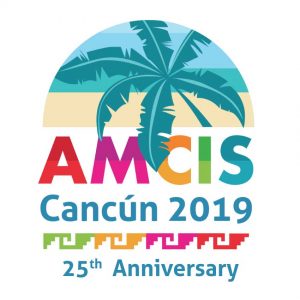Abstract
Abstract The word vintage is generally accepted to mean clothing produced in the period between 1920s and 1980s (Cervellon et al., 2012). According to Fischer (2015), fashion usually means rapid changes and up-to-date trendiness. Vintage dressing, however, has been a fashionable trend for over 40 years. Can AI be used to predict the next fashion trend? Fashion industry is currently exploring the use of AI to analyze customer behavior and predict next year’s fashion trends. Predicting the correct next trend is vital to the competitiveness and survivability of fashion brands. Research in this area is not new. For example, research by Jiang and Liao(2018) introduces probabilistic linguistic linear least absolute regression model for fashion trend forecasting. Wang and Rasheed (2014) proposed the use of Bayesian Network, a probabilistic model which represents variables and their conditional dependencies (Russel & Norvig, 2009), to deduce the relationship between previous fashion trends and future fashion trends. In this research, we will study collaborative AI in the vintage fashion design. Collaborative AI is the partnership between AI and humans. New trendy products can now be designed by using machine learning and computer vision technologies to analyze data from fashion product images and transaction data (Zhu et al., 2018). The research questions in this study are: (i) how can AI help in the vintage fashion design; (ii) how can AI and humans function collaboratively in this context; and (iii) what are the change management required for collaborative AI to be successfully implemented in the vintage fashion design. Qualitative research will be carried out as it enables us to have an in-depth understanding of collaborative AI in vintage fashion industry and allows us to better interact with the interviewees. The subjects in this study will include fashion designers and executives in fashion retail channels. As a pioneering research on collaborative AI and vintage fashion industry, this research opens a new stream of research and the results will inform both academics and practitioners.
Recommended Citation
Luo, Yitian and Siau, Keng, "AI-Fashion: Collaborative AI in the Fashion Industry" (2019). AMCIS 2019 Proceedings. 69.
https://aisel.aisnet.org/amcis2019/treo/treos/69
AI-Fashion: Collaborative AI in the Fashion Industry
Abstract The word vintage is generally accepted to mean clothing produced in the period between 1920s and 1980s (Cervellon et al., 2012). According to Fischer (2015), fashion usually means rapid changes and up-to-date trendiness. Vintage dressing, however, has been a fashionable trend for over 40 years. Can AI be used to predict the next fashion trend? Fashion industry is currently exploring the use of AI to analyze customer behavior and predict next year’s fashion trends. Predicting the correct next trend is vital to the competitiveness and survivability of fashion brands. Research in this area is not new. For example, research by Jiang and Liao(2018) introduces probabilistic linguistic linear least absolute regression model for fashion trend forecasting. Wang and Rasheed (2014) proposed the use of Bayesian Network, a probabilistic model which represents variables and their conditional dependencies (Russel & Norvig, 2009), to deduce the relationship between previous fashion trends and future fashion trends. In this research, we will study collaborative AI in the vintage fashion design. Collaborative AI is the partnership between AI and humans. New trendy products can now be designed by using machine learning and computer vision technologies to analyze data from fashion product images and transaction data (Zhu et al., 2018). The research questions in this study are: (i) how can AI help in the vintage fashion design; (ii) how can AI and humans function collaboratively in this context; and (iii) what are the change management required for collaborative AI to be successfully implemented in the vintage fashion design. Qualitative research will be carried out as it enables us to have an in-depth understanding of collaborative AI in vintage fashion industry and allows us to better interact with the interviewees. The subjects in this study will include fashion designers and executives in fashion retail channels. As a pioneering research on collaborative AI and vintage fashion industry, this research opens a new stream of research and the results will inform both academics and practitioners.


